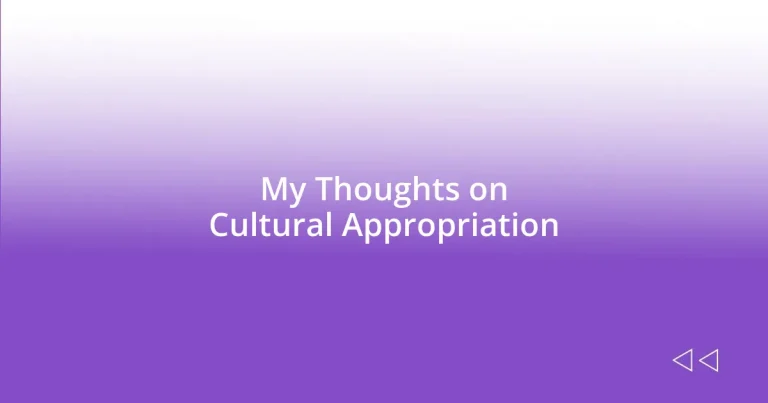Key takeaways:
- Cultural appropriation involves adopting elements from other cultures, often leading to the exploitation and misrepresentation of the originating communities.
- Historical context shows that appropriation often stems from colonial practices and results in commodification without proper acknowledgment of original cultural significance.
- Contemporary examples include fashion brands using Indigenous designs without credit, Halloween costumes reducing sacred attire to stereotypes, and celebrities trivializing traditional hairstyles.
- Supporting cultural authenticity involves engaging meaningfully with cultures, promoting marginalized artists, and advocating for representation in media and education.
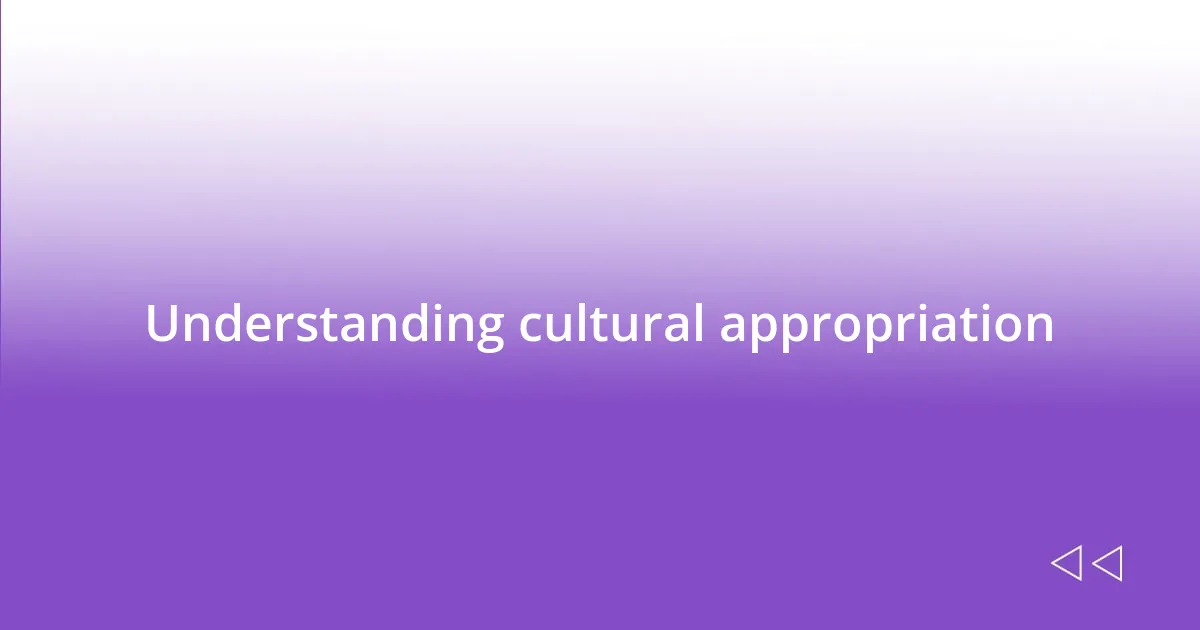
Understanding cultural appropriation
Cultural appropriation often manifests when individuals or groups adopt elements from a culture that is not their own, typically disadvantaging the originating culture. I remember the first time I noticed this at a music festival. A popular artist wore traditional Native American headdresses on stage, which sparked a heated debate among the audience. It made me wonder: how often do we support such actions without recognizing the history and significance behind these cultural symbols?
It’s essential to understand that cultural appropriation is not merely a matter of borrowing elements but often comes with power dynamics that can make it profoundly harmful. Take, for instance, fashion trends that highlight Indigenous patterns, yet the creators behind these designs often remain unacknowledged or undercompensated. Why is it that the appropriation of cultural symbols or styles can lead to profit for some while the originating communities struggle with misrepresentation and hardship?
Emotional resonance plays a significant role in how cultural appropriation impacts communities. I think about the pride someone must feel when their culture is celebrated, yet the pain that arises when it’s exploited. It raises questions about respect and recognition—how do we honor another culture without crossing the line into appropriation? In my journey to understand this complex issue, I’ve realized that awareness is the first step in fostering genuine appreciation rather than appropriation.
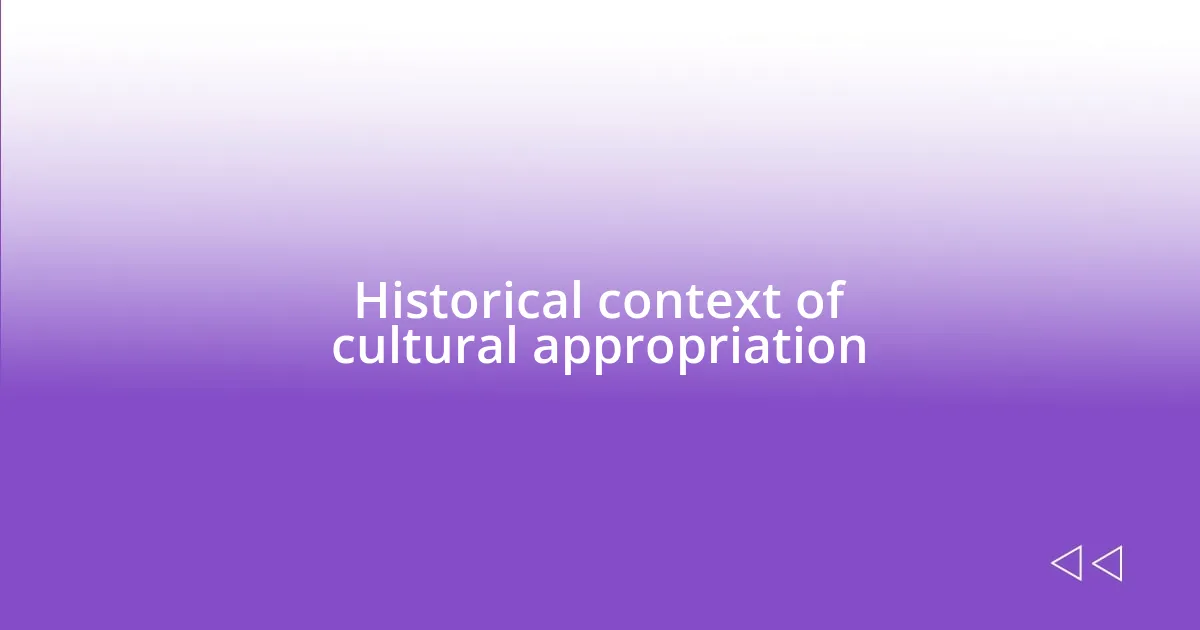
Historical context of cultural appropriation
Cultural appropriation has a deep and often uncomfortable history. It frequently stems from colonial practices where dominant cultures exerted power over marginalized ones. I remember reading about how European colonizers would adopt Indigenous practices, often stripping them of their original significance, which made me reflect on the continuing implications of such actions today.
In many cases, appropriation has led to the commodification of cultural aspects, where traditional elements are used superficially for profit without understanding their origins. Some years ago, I attended an art exhibit featuring Indigenous works that were reinterpreted by non-Indigenous artists. The excitement I felt quickly turned to disappointment as I realized the creators of the original pieces remained largely unrecognized. It highlighted the importance of context that is often overlooked in discussions about cultural sharing.
Throughout history, the line between cultural exchange and appropriation has often blurred. I think about my experiences traveling to different countries, where I’ve had to reflect on my role as a visitor. When navigating foreign cultures, the key has always been respect and open dialogue, ensuring that my appreciation doesn’t unintentionally turn into appropriation. Understanding this historical backdrop helps frame the conversation in a way that honors those who have come before.
| Factor | Impact on Cultural Appropriation |
|---|---|
| Colonial Practices | Imposition of dominant cultures over marginalized communities |
| Commodification | Superficial use of cultural elements for profit without acknowledgment |
| Lack of Context | Misunderstanding cultural significance, leading to exploitation |
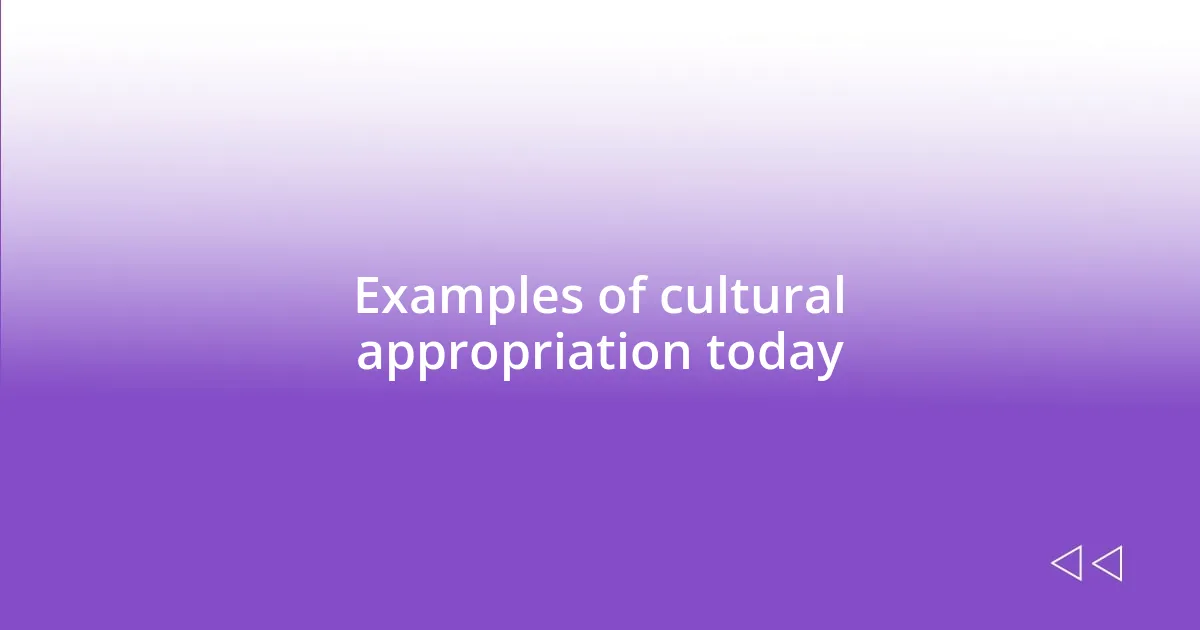
Examples of cultural appropriation today
I’ve noticed cultural appropriation trending in various contexts that can feel quite unsettling. For instance, when I see high-profile celebrities donning traditional African hairstyles, it often sparked debates about whether it’s a celebration or disrespect. The disparity becomes even clearer when you consider that these styles have historical significance and personal meaning in their original cultures, contrasted starkly with how they can be trivialized in mainstream media.
Here are a few contemporary examples of cultural appropriation that illustrate this issue:
- Fashion Brands: Many have launched collections using patterns and symbols from Indigenous cultures without credit or compensation to the originating communities.
- Halloween Costumes: Often, you’ll find costumes that caricature sacred cultural attire, reducing meaningful traditions to mere dress-up.
- Music Festivals: Certain music acts have embraced traditional attire or symbols, drawing attention but often lacking a proper homage to their cultural origins.
- Food Trends: Fusion cuisine can sometimes overlook the roots of the original dishes, presenting a diluted version while the traditional chefs remain unrecognized.
These instances show how easily cultural symbols can lose their significance, becoming mere trends that lack the depth they originally held. It’s a reminder for me that while we may enjoy diverse cultures, we should approach them with care and understanding.
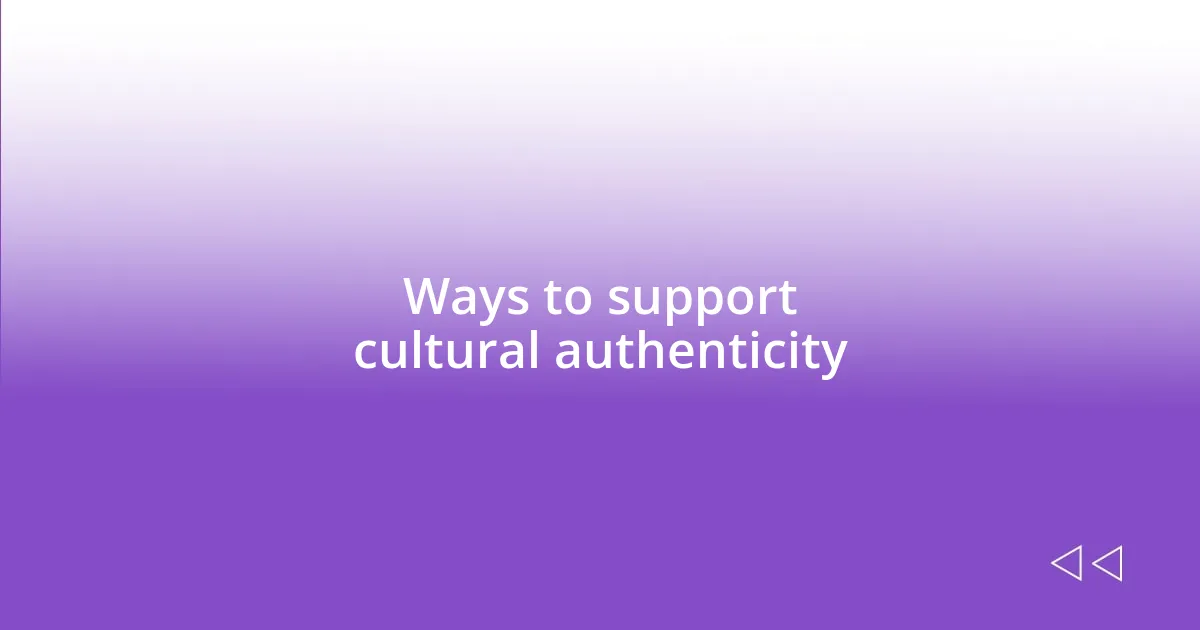
Ways to support cultural authenticity
One powerful way to support cultural authenticity is to prioritize learning from diverse cultures in meaningful ways. I recall attending a cultural workshop in my community that highlighted traditional dances from around the world. Participating not only deepened my appreciation but also fostered genuine connections with the cultural bearers who shared their stories. Isn’t it striking how personally engaging with a culture can transform our understanding of it?
Another effective method is to support businesses and artists from marginalized communities. I often seek out local artisans at craft fairs, knowing my purchases directly contribute to their livelihoods. It feels rewarding to own a piece of art that resonates with historical significance while empowering the creator. Have you ever considered how your spending habits could promote cultural authenticity and resilience?
Lastly, advocating for representation in media and education can make a significant difference. When I watched a documentary showcasing Indigenous voices, it opened my eyes to perspectives typically overshadowed. This experience sparked conversations among my friends about the importance of amplifying authentic narratives. How can we encourage more platforms to share these voices? By actively discussing and sharing these insights, we can shift the narrative towards respect and understanding instead of appropriation.












